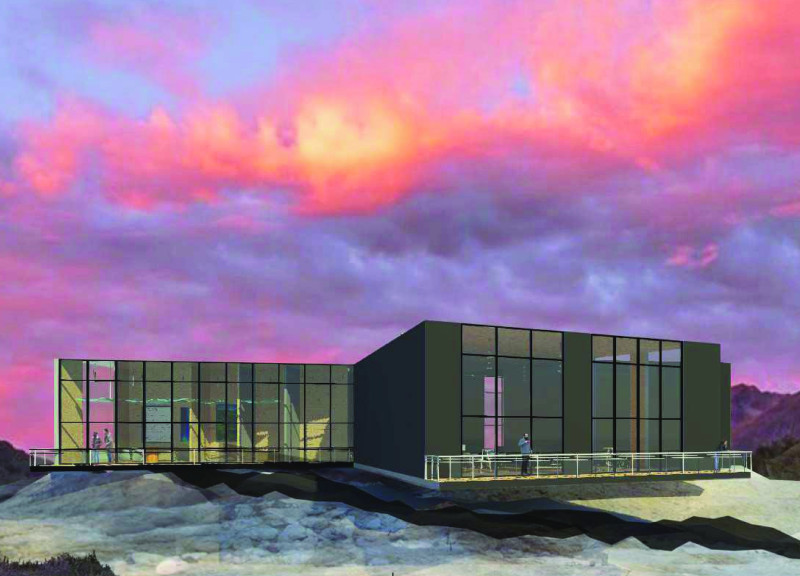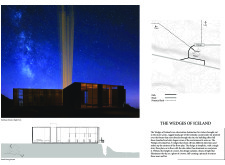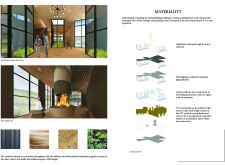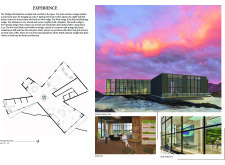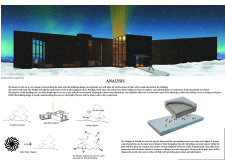5 key facts about this project
At its core, The Wedges of Iceland represents the interplay between architecture and nature, striving to create a dialogue that enriches the visitor experience while maintaining a commitment to environmental stewardship. The layout consists of five elegantly arranged wedges that extend outward, each serving a distinct function while collectively fostering an inclusive and open atmosphere.
The building's design includes crucial spaces tailored to diverse visitor needs. The entrance features a practical mudroom, allowing guests to transition comfortably into the building. Central to the layout is a light well that creates an inviting sense of orientation, encouraging movement towards the wedges, each offering unique features and viewpoints. The South Wedge accommodates multimedia facilities for educational presentations about Iceland's rich natural history, enhancing visitor engagement. The West Wedge serves as a relaxing area with seating and amenities that provide respite, while the North and Northwest Wedges contain functional necessities such as restrooms and storage. The East Wedge is designed as a communal hub—a social space equipped for gatherings, informal dining, and interaction with indoor gardens that invite nature into the visitor experience.
From a material perspective, The Wedges of Iceland utilizes a careful selection of locally sourced and sustainable materials that foster an environmental connection. Cross-Laminated Timber (CLT) forms the primary structural component of the building, delivering both strength and warmth. The use of curtain walls incorporating low-emissivity glass effectively maximizes natural light while minimizing energy loss, contributing to the project's overall sustainability goals. Advanced LED lighting features further enhance the experience, reducing light pollution and allowing for clear views of the night sky.
One of the unique aspects of the design is its emphasis on light and circulation. The interplay of natural and artificial light manipulation enhances the spatial experience, guiding visitors through the building. Circulation paths encourage exploration, with engaging features such as colored interactive pathways that invite a sense of play and curiosity. This dynamic movement through the space enriches both the sensory experience and educational opportunities available at the site.
The integration of hydroponic garden systems within the building not only elevates aesthetic appeal but also promotes wellness and sustainability, supporting the broader themes of environmental consciousness that permeate the design. The careful attention to these details illustrates a deep understanding of how architectural elements can enhance human experience while fostering a connection to nature.
The Wedges of Iceland stands as a well-considered architectural project that exemplifies modern design principles while respecting the unique topography of its location. Its distinct geometries and functional spaces work in concert to provide visitors with a thoughtful and engaging experience. For those interested in exploring this project further, considering architectural plans, architectural sections, and architectural designs will offer deeper insights into the innovative ideas that define this unique initiative. The project serves as an inspiration for future designs, showcasing how architecture can coexist with and enhance its natural surroundings. Readers are encouraged to delve into the project presentation to uncover more about this exemplary architectural endeavor.


